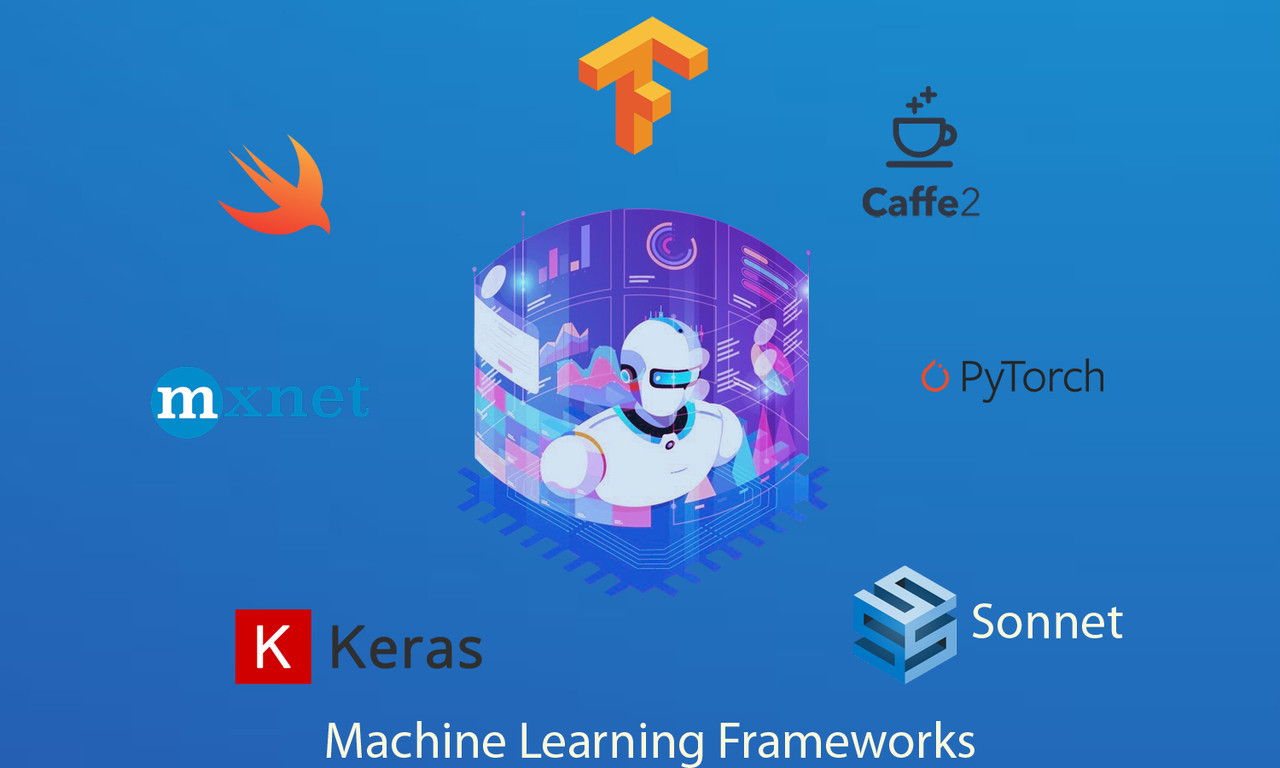
Which Machine Learning Frameworks To Try In 2019-20
Does deep learning and Keras framework is growing fastest?

Machine learning continues to evolve with pace, bringing us to the latest advanced algorithms like deep learning. In this article, we will discuss this branch and why it is so good. We will also share the best ML frameworks to try before 2020 comes.
Deep learning is simply great when it comes to accuracy. It plays a key role in bridging the gap between human intelligence and AI. It executes tasks of a higher level of sophistication and builds and deploys those tasks successfully. Today, developers can use different frameworks that allow them to create tools that can bring a better level of abstraction with a simplification of hard level programming challenges.
Let’s learn about these frameworks in detail
1. TensorFlow
TensorFlow is one of the best deep learning frameworks and is being used by many big players in the market, such as Twitter, Airbus, IBM, and others and the reason is its highly flexible system architecture.
- Python is the easiest client language that works well with TensorFlow. However, developers can also use other experimental interfaces available in JavaScript, C++, C#, Java and Go, and Julia.
- TensorFlow is not just used for powerful computing clusters but it offers the ability to run models on mobile platforms like android and iOS.
- TensorFlow means more coding. You won’t get the power of AI instantly; TensorFlow is a tool that helps in deep learning research.
- There is a static computation graph that operates TF. Developers initially define the graph and later run the calculations and if they find any need to change the architecture, they re-train the model.
Benefits of using TensorFlow
- It is easy with TensorFlow to create and experiment with deep learning architectures. The formulation for data integration is also handy.
- Being supported by Google, TensorFlow is not going anywhere for a while, hence you don’t have to worry while investing time and resources to learn TensorFlow
2. Caffe
Caffe is also a deep learning framework having the support of interfaces like C++, Python, C, MATLAB and the Command Line Interface. Being used for its speed and mobility, it can process more than 60 million images in a day using single Nvidia K40 GPU.
3. PyTorch
PyTorch is a great rival of TensorFlow. It was developed for Facebook services, but companies like Salesforce and Twitter are using it for their tasks.
- PyTorch library is operated with a dynamically updated graph. This means you can make changes to the architecture in the process, which cannot be done in TensorFlow.
- PyTorch offers standard debuggers to users, for instance, PyCharm, or PDB.
You may use PyTorch for small projects and prototyping. When it is about cross-platform solutions, TensorFlow works best.
4. Sonnet
Sonnet is the deep learning framework made on top of TensorFlow. It is made to develop neural networks using a complex architecture launched by DeepMind.
- It offers high-level object-oriented libraries that help in building neural networks or other ML algorithms.
- The idea is to build the primary python objects corresponding to a certain neural network part. Moreover, these objects are liberally connected to the TensorFlow graph.
One can use Sonnet to reproduce the research made in DeepMind’s papers with ease.
5. Keras
Keras is one of the ML frameworks that may be useful for you if you own a pool of data or you are following deep learning.
- Keras can be used as a professional API
- Developers can create massive DL models in Keras with single-line functions. However, it also makes Keras less configurable environment.
Keras is suitable for beginners who want to explore the deep learning framework. It can be used for learning and prototyping simple concepts, to develop an understanding of various models and processes of their learning.
6. MXNet
MXNet is an extremely scalable DL tool that can be applied to a distinct range of devices. It supports many languages like Python, C++, Julia, R, JavaScript, Scala, Perl, and Go.
MXNet framework is effectively parallel on several machines and multiple GPUs.
It can be used if mobile app developers need support from multiple GPUs. It offers clean and easy to maintain code (Scala, R, Python, and other APIs). It can solve the problem of a novice in deep learning fast.
7. Swift
If you are a programmer, when you ask about Swift, you immediately link it with iOS app development. However, if you are into deep learning, you must have known about Swift for TensorFlow. It allows for more robust algorithms.
One can use swift if dynamic languages are unsuitable for his tasks.
Conclusion
If you are a beginner and want to explore Deep Learning, then Keras is your best option. If you want a framework for research purposes, go with PyTorch.
Here we have discussed top machine learning frameworks that you must try in 2019. If you know more on this topic, share information in comments.

Divyesh Aegis is a senior writer and working with NEX – leading mobile and web development company in USA. You can contact his in order to hire digital marketing to avail the highly functional mobile and web development solutions. He has several years of experience in the field of SEO.
View Divyesh Aegis`s profile for more


Leave a Comment